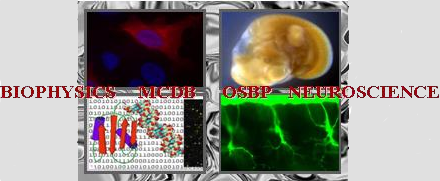Poster abstracts
Poster number 69 submitted by Tabatha Simmons
Proof-of-Principle Study Shows Efficient Skipping of Exon 2 Using Antisense Morpholino Oligomers
Tabatha R. Simmons (Molecular, Cellular and Developmental Biology, The Ohio State University, Columbus, OH), Nicolas Wein (Center for Gene Therapy, The Research Institute at Nationwide Childrens, Columbus, OH), Felecia Gumienny (Center for Gene Therapy, The Research Institute at Nationwide Childrens, Columbus, OH), Hannah Huang (Center for Gene Therapy, The Research Institute at Nationwide Childrens, Columbus, OH), Kevin M. Flanigan (Center for Gene Therapy, The Research Institute at Nationwide Childrens, Columbus, OH; Departments of Pediatrics and Neurology, The Ohio State University, Columbus, OH)
Abstract:
Currently, exon skipping therapies for Duchenne muscular dystrophy (DMD) have been developed for patients with out-of-frame deletions where treatment will lead translation of an internally truncated but partially functional dystrophin protein. In contrast, we are focusing on treating duplications mutations, accounting for around 6% of all mutations, resulting in wild-type transcript and a full-length protein. Modeling the most common single exon duplication we have developed the first duplication mouse containing a duplicated exon 2. We have performed a proof-of-principle study using antisense oligomer (AO)-induced exon 2 skipping using this Dup2 mouse. Intramuscular (TA) injections of exon 2-directed different antisense peptide-morpholino conjugates (PPMO) were performed at either 10 or 20 ug total PPMO (N=6 muscles each) doses. Mice were injected at 8 weeks and sacrificed 1 month later for muscle analysis of DMD mRNA and dystrophin protein expression. Additionally, systemic (tail vein) injections are being conducted of at a dose of 30 ug/kg, at 1 week, 2 week and 1 month timepoints. For the IM studies, a gradient of exon 2 exclusion was seen by RT-PCR at both doses with corresponding high levels of properly localized dystrophin protein by IF and western blot.
Analyses of RT-PCR and protein expression are underway for the systemic delivery PPMOs. These data suggest that skipping of a duplicated exon 2 may be a feasible therapeutic approach, particularly because skipping of exon 2 may be associated with an apparently unlimited therapeutic window. Over-skipping - to the exclusion of exon 2 entirely - results in activation of an internal ribosome entry site (IRES) located in exon 5 of dystrophin that allows for cap-independent translation from an alternative initiation site within exon 6. This alternate dystrophin isoform is highly functional despite being N-truncated, consistent with the observation that patients expressing it have minimally symptomatic (or even asymptomatic) Becker muscular dystrophy (BMD), and suggesting a potential route to therapy for any of the approximately 5% of patients with mutations in the 5’ end of the gene.
Keywords: DMD, Antisense, Skipping
